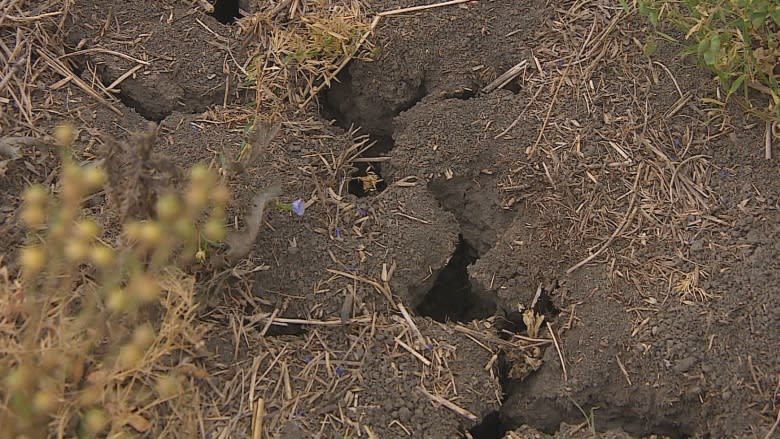Lack of snow could mean a tough seeding season for farmers
Last year was a dry year for much of Saskatchewan — and while less snow than usual could mean drier soil for farmers in the province this spring, one expert says it's too early to sound the alarm.
In 2017, Regina broke the record for its driest 11-month period, with only 125 millimetres of precipitation.
Provincial soil specialist Ken Panchuk said there is still time before spring seeding to see more snow and rain, but the many melts throughout the winter season so far have left the same area between Regina and Alberta largely devoid of snow.
He said that's a concern for farmers with winter cereal crops, which need a blanket of snow for insulation. It could also be a problem for farmers waiting to seed in spring.
"When the soil is bare, we continue to lose moisture from the soil surface through a process called sublimation," Panchuk said.
"That's when snow or ice evaporates without going through the melt phase, so that's the concern right now."
Panchuk explained that in 2016, almost all of the soil across the grain belt and pasture land went into winter fully recharged with moisture. That carried the crops in 2017, Panchuk said, resulting in good yields for the most part.
Conditions in the fall of 2017 were much drier.
"Some farmers and ranchers will be a bit concerned because they would like to see some snow cover but just relax, we've still got three months before we seed the next crop or the hay and pasture lands start to regrow," he said.
Ron Hetland, a farmer around Spalding — about 150 kilometres northeast of Saskatoon — said his area has enough snow to begin seeding, but spring rains will determine crop outcomes.
"We went into the fall fairly dry so I know we will need adequate rain once the crop is in the ground," he said.
"It does seem like the patterns have been setting up in the last 18 months or so where we haven't seen the amount of moisture that we certainly have seen for the last several years. If that trend continues … it could potentially be a serious matter, but I wouldn't forecast that at this point."
Hetland said five to six inches of rain at the right time in the growing season last year ended up being enough for crops, due to existing soil moisture.
"Because we had ample supplies going into the crop, we had a very good crop. We're not seeing that same carry-over now," he said.
"Without something to replenish the soil moisture, in the form of snow, it has potentially a pretty significant impact.
"Without a good snow cover, we're looking at the potential of a drought but I wouldn't call that at this point in time."



